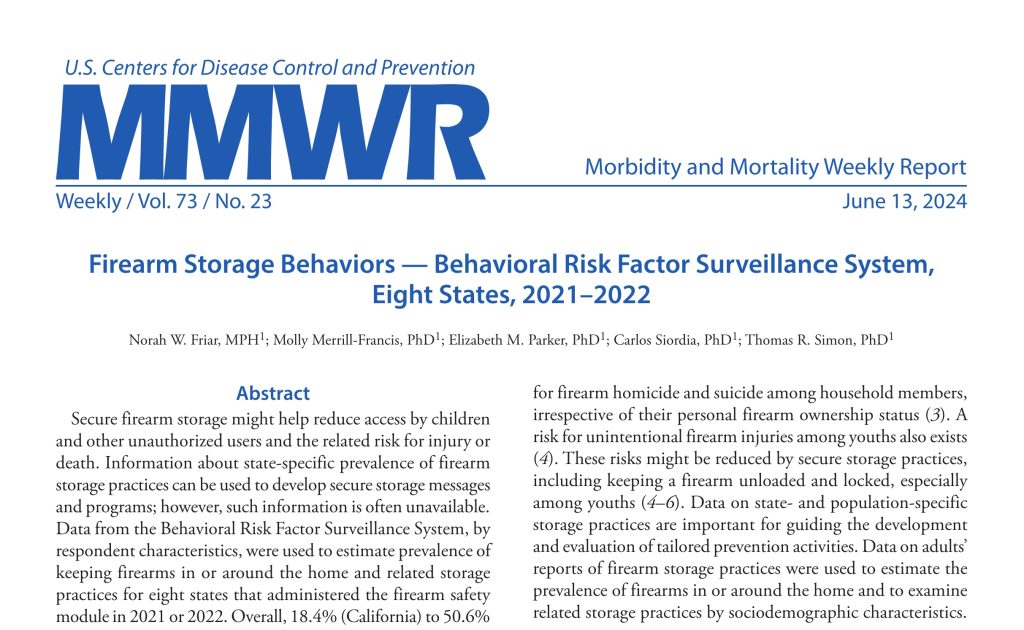
Three teenage girls were alone in their Lawrence County, Kentucky home one hot summer day in 2019. Suddenly, a white car pulled up and two men got out. One man started kicking in the front door. The second suspect circled around to the backyard and began breaking out a window with a shovel. The youngest of the girls, who was 14-years old at the time, found and loaded the family’s 9mm pistol and fired a round at one of the suspects. Both quickly left.
In 2021, a 12-year-old boy armed himself after two masked home invaders broke into his grandmother’s home demanding money. One of the suspects shot the 73-year-old woman, which prompted the youth to return fire in self-defense. Police later found one of the suspects curled up on his side in an intersection near the home. He was transported to a nearby hospital where he was pronounced dead. The grandmother survived her wounds.
In February, a 14-year-old Houston-area teen fired six rounds at an intruder who was trying to break into his home through the front door. Police found the suspect, who was wearing gloves and carrying a backpack, in the front yard where he was pronounced dead.
None of these defensive gun usages — or any others — were even mentioned in a recent report from the Centers for Disease Control and Prevention, which purported to examine firearm storage data behaviors. Defensive gun usages weren’t the only data set omitted from the report.
The CDC needed so many disclosures and disclaimers to tell readers what other data was missing from its research that it’s a miracle the report even was published.

The report, titled “Firearm Storage Behaviors — Behavioral Risk Factor Surveillance System, Eight States, 2021–2022,” was based on telephone interviews. The researchers called the respondents using a “random-digit–dialed landline and mobile telephone survey.” However, the authors immediately encountered four significant problems that affected the validity of their work:
1. They were unable to determine whether firearms were stored loaded or unloaded during the phone interviews.
2. They were only able to obtain data from the eight states, which is statistically meaningless.
3. Some respondents did not want to disclose whether they had a firearm in their home.
4. All of the data was self-reported to the researchers, and therefore “subject to social desirability and recall biases.”
As a result, the CDC’s findings were statistical gibberish. In the handful of states that participated, the authors concluded, “18.4% – 50.6% of respondents reported the presence of a firearm in or around their home, and 19.5% – 43.8% of those with a firearm reported that at least one firearm was stored loaded.”

Despite the holes, lack of conclusiveness, and other problems with the data, the CDC report was good enough to pass muster with the corporate media. Gannett’s flagship newspaper USA TODAY quickly published a story titled, “Startling percentage of homes have unlocked, loaded guns, endangering kids, study finds.”
Incompleteness doesn’t matter to the corporate media if the topic is guns. Besides, the reporter quickly filled in the holes with quotes from Sarah Burd-Sharpe, senior director of research at Everytown for Gun Safety.
“Roughly once every day in the United States, a child under the age of 18 gains access to a loaded gun and unintentionally shoots themself or someone else,” Burd-Sharpe told the newspaper. “But there is no such thing as an accidental shooting by a child – the onus to store guns securely and keep them out of reach of children is always on adults.”
Evidently, the fact that the CDC report didn’t make that conclusion didn’t matter to the newspaper reporter, his editors, or Everytown’s Burd-Sharpe.
Takeaways
The CDC loves to waste millions of taxpayer dollars conducting anti-gun research, because their goal has always been to declare “gun violence” a public health crisis. They don’t care about other types of violence, which are more common. For the CDC, only “gun violence” constitutes a crisis, and they see themselves as being behind the curve, since the American Medical Association adopted a policy calling “gun violence” a public health crisis way back in 2016.
As it stands now, the CDC is barred from using public funds to support or advocate for gun control. We need to zealously be on guard for any attempt to circumvent this restriction, because the CDC has proven that its research is biased and cannot be trusted.
Defensive gun usages aren’t an aberration. They are the very reason why many law-abiding Americans keep firearms in their homes. To completely ignore them for a study that purports to examine firearm storage behaviors says a lot about the validity of the research being produced and the bias of the researchers.
The Second Amendment Foundation’s Investigative Journalism Project wouldn’t be possible without you. Click here to make a tax deductible donation to support pro-gun stories like this.
This story is part of the Second Amendment Foundation’s Investigative Journalism Project and is published here with their permission.


Did the report ask about children in the home? If not, then the conclusion relating to child safety is less than meaningless.
Also love the fudging here: “in or around their home“. Did they define “around”? Does it count if my neighbors have guns?
You’ve got to love twofold-plus magnitude confidence intervals, reported to three significant figures. “Police are looking for a male between 18.3 and 45.6 years of age…”
How many of the “children” that were actually interviewed were gang bangers ? How many of those alleged firearms were legally acquired and possessed ? All interesting questions never addressed.
Yup, without determining whether there are children present in a home this study is worthless.
The CDC is nothing more than another wing of the commie propaganda machine.
“As it stands now, the CDC is barred from using public funds to support or advocate for gun control.”
Huh? Did I somehow miss the re-imposition of that restriction? How and when did our “minority party” manage that?